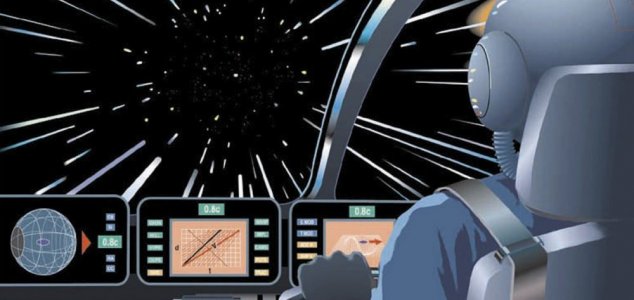Science & Technology
October 16, 2019 · 13 comments
13 comments

Could the helical engine be the future of spaceflight ? Image Credit: NASA
But what if it was possible to travel such distances in a fraction of the time ?
Enter David Burns - a NASA engineer with a concept for a new type of propulsion system that can theoretically reach 99% of the speed of light without needing any sort of propellant.
Known as the 'helical engine', this exotic drive works by exploiting the change in mass that occurs at relativistic speeds as described in Einstein's special theory of relativity.
The idea has drawn comparisons to aerospace engineer Roger Shawyer's controversial EmDrive.
"The engine accelerates ions confined in a loop to moderate relativistic speeds, and then varies their velocity to make slight changes to their mass," Burns writes. "The engine then moves ions back and forth along the direction of travel to produce thrust."
"The engine has no moving parts other than ions traveling in a vacuum line, trapped inside electric and magnetic fields."
While the drive only exists on paper at the moment, the idea behind it is certainly interesting.
Whether it will actually work in practice however remains to be seen.
Source: Science Alert | Comments (13)
'Helical engine' could reach relativistic speeds
By T.K. RandallOctober 16, 2019 ·
 13 comments
13 comments
Could the helical engine be the future of spaceflight ? Image Credit: NASA
NASA engineer David Burns has developed a concept for a new drive capable of reaching distant solar systems.
Traversing the vast distances between stars is undoubtedly a major problem - even reaching our nearest neighbor with today's technology would take thousands of years.But what if it was possible to travel such distances in a fraction of the time ?
Enter David Burns - a NASA engineer with a concept for a new type of propulsion system that can theoretically reach 99% of the speed of light without needing any sort of propellant.
Known as the 'helical engine', this exotic drive works by exploiting the change in mass that occurs at relativistic speeds as described in Einstein's special theory of relativity.
"The engine accelerates ions confined in a loop to moderate relativistic speeds, and then varies their velocity to make slight changes to their mass," Burns writes. "The engine then moves ions back and forth along the direction of travel to produce thrust."
"The engine has no moving parts other than ions traveling in a vacuum line, trapped inside electric and magnetic fields."
While the drive only exists on paper at the moment, the idea behind it is certainly interesting.
Whether it will actually work in practice however remains to be seen.
Source: Science Alert | Comments (13)

The Unexplained Mysteries
Book of Weird News
AVAILABLE NOW
Take a walk on the weird side with this compilation of some of the weirdest stories ever to grace the pages of a newspaper.
Click here to learn more

Support us on Patreon
BONUS CONTENTFor less than the cost of a cup of coffee, you can gain access to a wide range of exclusive perks including our popular 'Lost Ghost Stories' series.
Click here to learn more
Israel, Palestine and the Middle-East
Ancient Mysteries and Alternative History
Other World News
Russia and the War in Ukraine
Total Posts: 7,768,284 Topics: 325,021 Members: 203,765
Not a member yet ? Click here to join - registration is free and only takes a moment!
Not a member yet ? Click here to join - registration is free and only takes a moment!





























Please Login or Register to post a comment.